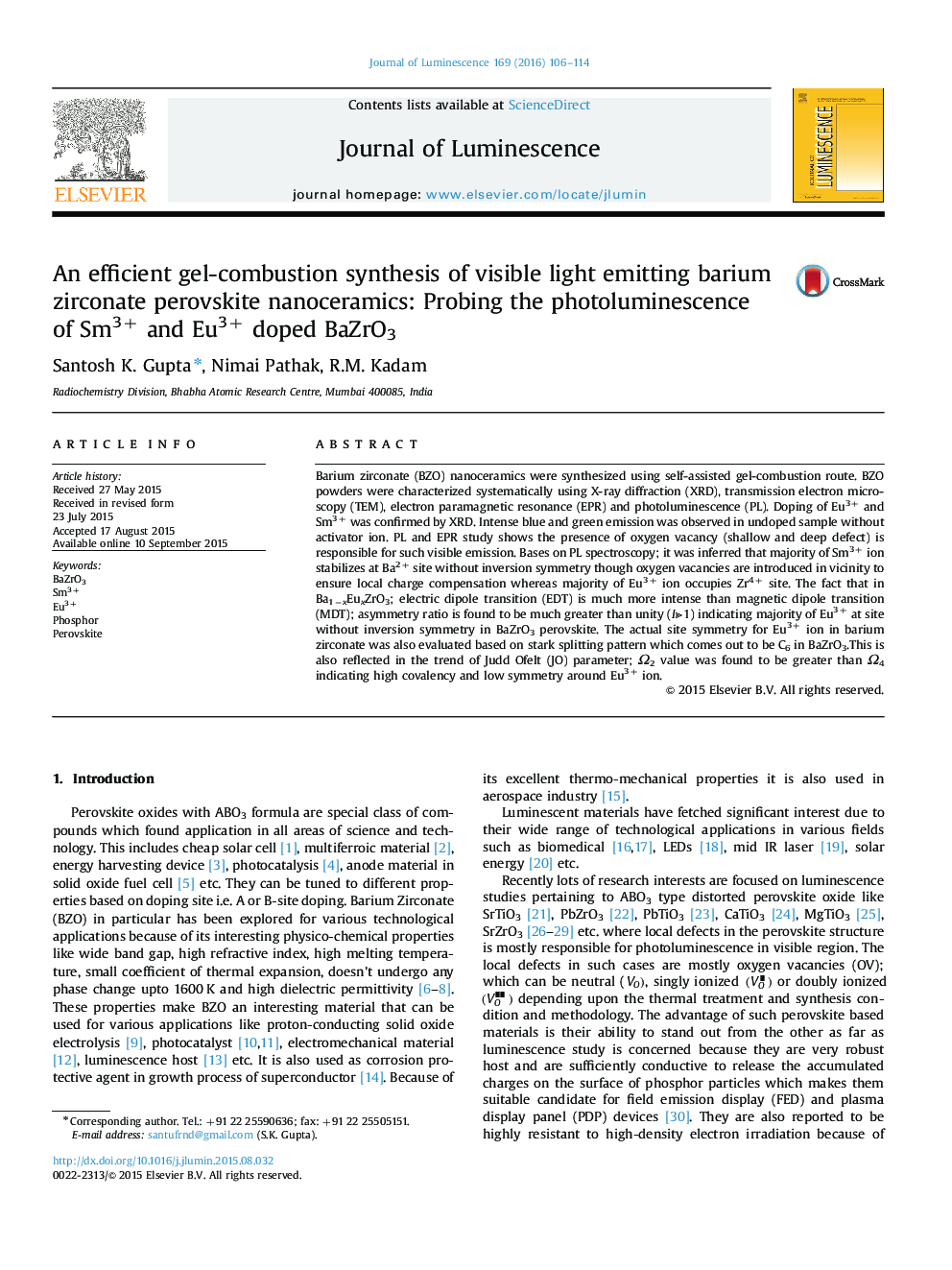| Article ID | Journal | Published Year | Pages | File Type |
|---|---|---|---|---|
| 5399217 | Journal of Luminescence | 2016 | 9 Pages |
Abstract
Barium zirconate (BZO) nanoceramics were synthesized using self-assisted gel-combustion route. BZO powders were characterized systematically using X-ray diffraction (XRD), transmission electron microscopy (TEM), electron paramagnetic resonance (EPR) and photoluminescence (PL). Doping of Eu3+ and Sm3+ was confirmed by XRD. Intense blue and green emission was observed in undoped sample without activator ion. PL and EPR study shows the presence of oxygen vacancy (shallow and deep defect) is responsible for such visible emission. Bases on PL spectroscopy; it was inferred that majority of Sm3+ ion stabilizes at Ba2+ site without inversion symmetry though oxygen vacancies are introduced in vicinity to ensure local charge compensation whereas majority of Eu3+ ion occupies Zr4+ site. The fact that in Ba1âxEuxZrO3; electric dipole transition (EDT) is much more intense than magnetic dipole transition (MDT); asymmetry ratio is found to be much greater than unity (I⪢1) indicating majority of Eu3+ at site without inversion symmetry in BaZrO3 perovskite. The actual site symmetry for Eu3+ ion in barium zirconate was also evaluated based on stark splitting pattern which comes out to be C6 in BaZrO3.This is also reflected in the trend of Judd Ofelt (JO) parameter; Ω2 value was found to be greater than Ω4 indicating high covalency and low symmetry around Eu3+ ion.
Keywords
Related Topics
Physical Sciences and Engineering
Chemistry
Physical and Theoretical Chemistry
Authors
Santosh K. Gupta, Nimai Pathak, R.M. Kadam,
